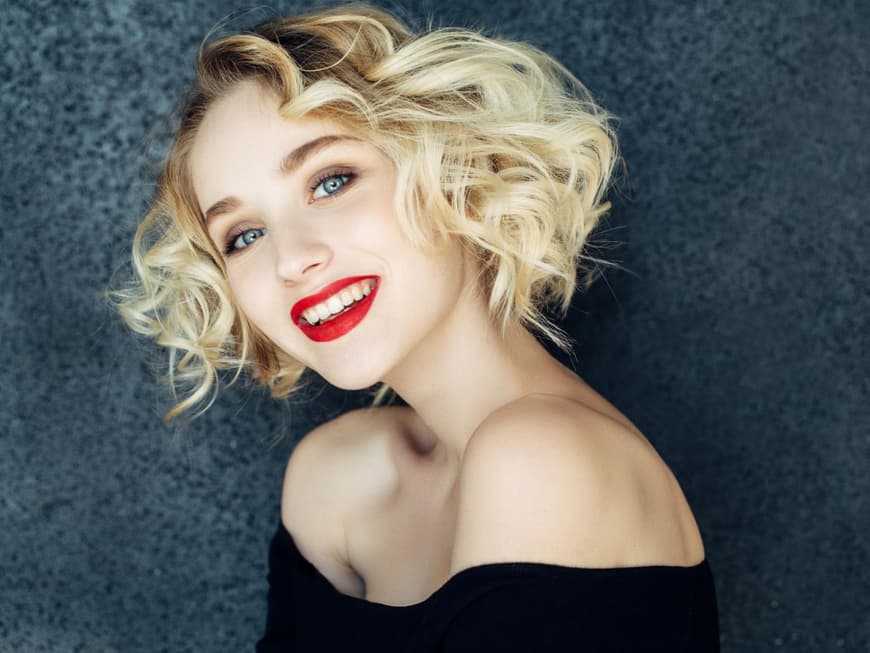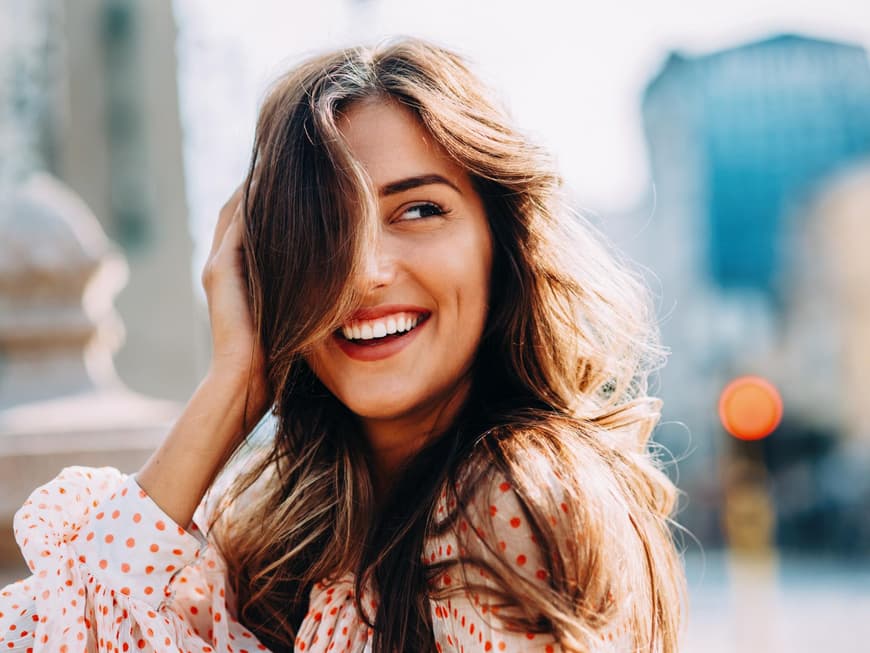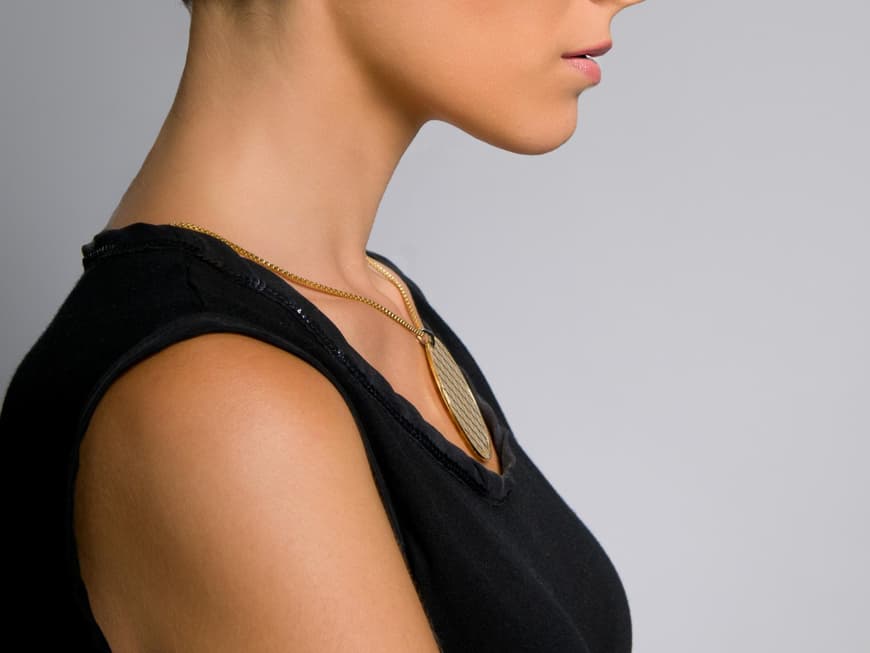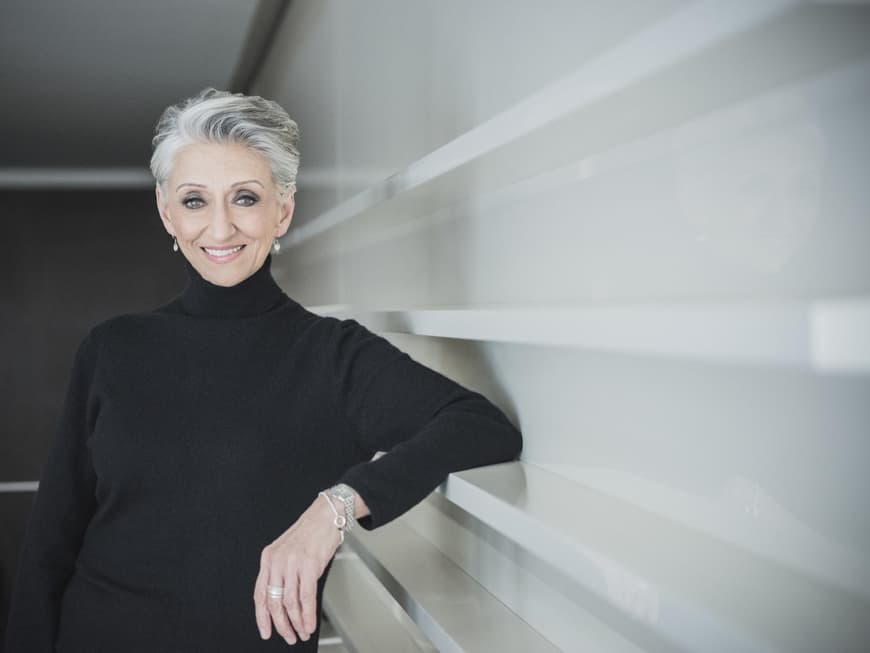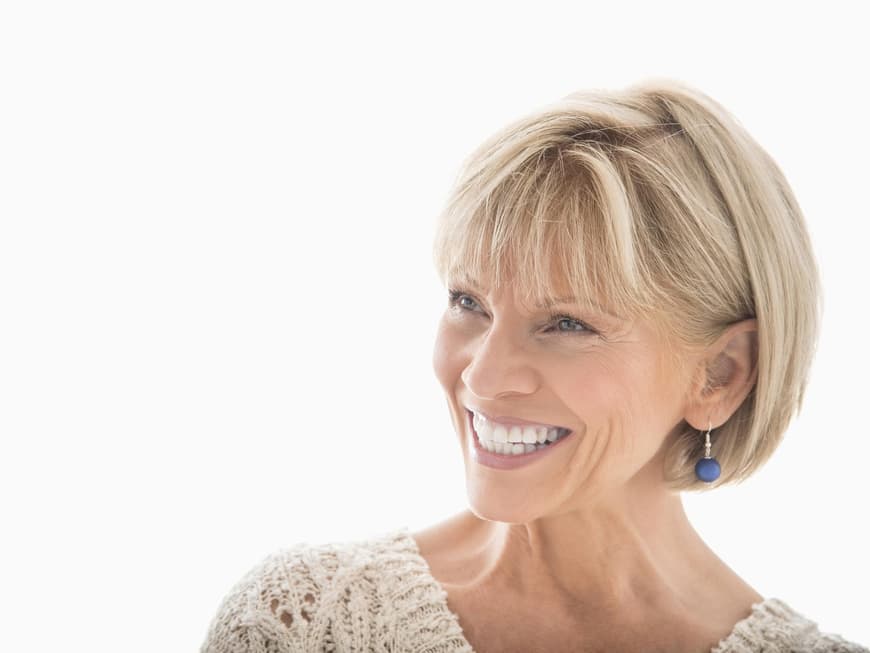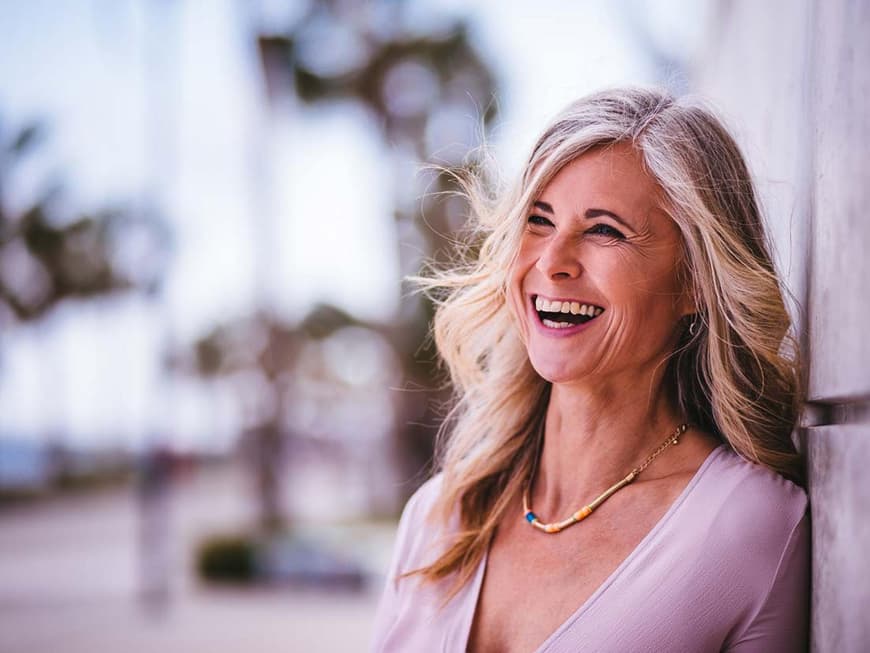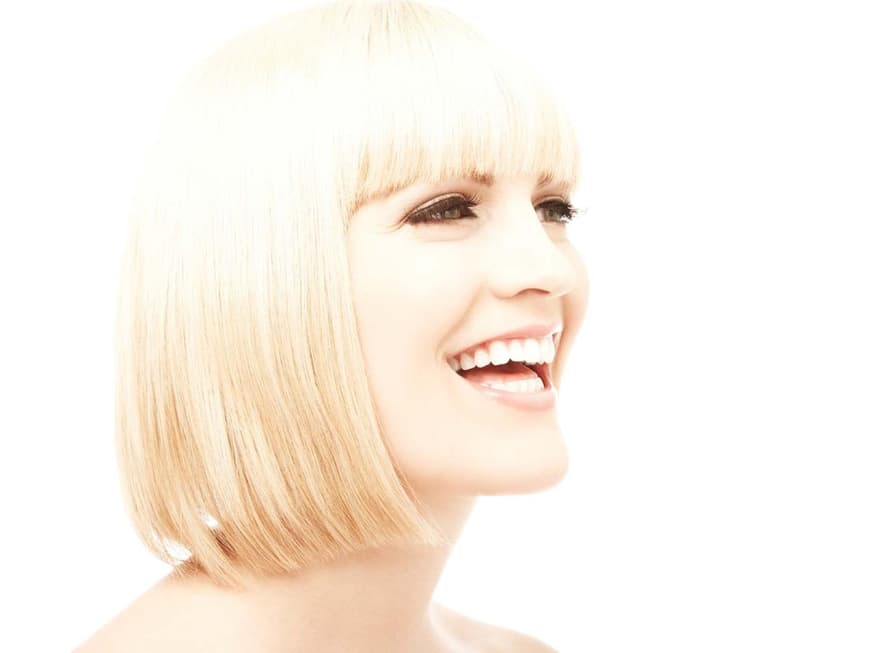Beautiful hair from 30
Hair gradually becomes finer - and often thinner too. The reason: the metabolism becomes slower, the hormone and nutrient balance changes. The hair roots are also less well supplied with blood, which is why the hair grows more sparsely, loses fullness and density and loses its shine.
Products that restore volume and suppleness to the hair and moisturize it at the same time are now ideal. Special anti-ageing treatments stimulate the hair roots so that every hair is firmly anchored and none falls out. It is advisable to cleanse the hair properly of silicones etc. so that the hair can really absorb the moisture. Whether you always need a conditioner after shampooing depends on your hair. Leave-in products are always an alternative. Regular hair masks are always recommended.
Whether it's a pixie, long bob or soft waves - you can wear any hairstyle that your hair allows and suits your style. Every hair is happy about a color-free time: maybe a tint is enough - or you can simply wear your beautiful natural shade!
Beautiful hair after 40
Unruly, stubborn hair is usually a problem after the age of 40. The reason for this is the gradual onset of the oestrogen lull. As a result, the sebaceous glands of the scalp only produce their protective oil on a low flame. Chemical treatments such as coloring, a perm and frequent styling with a hairdryer, straightener or curling iron also put a strain on the hair.
Shampoos for damaged hair or particularly gentle shampoos are now recommended. Special care with moisturizing substances such as microfine oils and regenerating substances such as proteins, keratin and panthenol will help to balance the hair. Even if colored hair needs an extra portion of care: Avoid products with silicones - they coat the hair, which is why care substances cannot penetrate and hair dyes or tints cannot be absorbed as well.
Hair is simply easier to comb after washing if you use a conditioner. This is applied to the ends of the hair - the application time depends on the product. You can also make your own vinegar rinse and then apply it to your hair. A final cold pour ensures that the roughened hair is closed again. Your hair will also benefit from regular intensive treatments. The frequency depends on how stressed your hair is. Nourishing tip fluids and hair oils are also a good choice - apply them to towel-dried hair after shampooing to strengthen it and prevent breakage. Important: Cut your hair regularly.
If you have beautiful, full hair, you can wear any hairstyle to suit your style. If you have long hair, make sure it looks really well-groomed and doesn't have frayed ends. And: If you want to cheat away a few years visually, you should no longer wear your hair very long - shoulder-length makes you look younger!
Beautiful hair from 50
The onset of the menopause causes oestrogen levels to drop further. As a result, hair becomes thinner and thinner and loses its resilience. Hair that falls out grows back much more slowly. If you dye your hair, you should be careful: With increasing age, the melanin production of the hair roots decreases. The result: the hair appears "colorless" (not grey). As they also lose their natural protection against light, UV rays and oxygen can give them a slight yellow tinge. A silver shampoo (e.g. from Guhl) prevents this and special products give the hair more volume and elasticity.
Hair gets older over the years. It can become finer, in which case it needs special products for more volume and with keratins. But it can also become more stubborn if it loses its pigmentation and turns gray. Then it not only needs an extra portion of care, but also shampoos that prevent yellowing.
Never without conditioner! Only 30 percent of German women use conditioner. What a shame! After all, it makes the hair manageable and shiny by closing the roughened cuticle. This can take the form of classic, wash-out products (leave in for a minute) or leave-in sprays that stay in the hair and provide even better care.
Dry, brittle hair is particularly happy to receive special attention. If your hair loses its suppleness, hair masks and treatments, which are best left to work under foil or a towel turban, can help. If the scalp goes crazy, serums provide relief and soothe irritated areas.
Flattering, soft curls are currently very much in vogue and are an ideal styling option. Soft waves are a great look for the second day after shampooing and for women with a slight natural wave. To achieve this, spray a little curl fluid into dry hair and use a curling iron to create gentle waves up to ear height, leaving out the ends.
The counter-trend to this is the long, straight bob. Work a volume product into damp, freshly washed hair (preferably using an anti-frizz shampoo) at the roots and a smoothing balm into the lengths and ends. Dry your hair. If you want to go the extra mile, use a medium-sized round brush to give the look even more volume at the top of the head. Then pull the hair through a straightening iron strand by strand, twisting the ends slightly inwards. Now apply a shine fluid to the palms of your hands and carefully smooth over the hair. To finish: spray.

